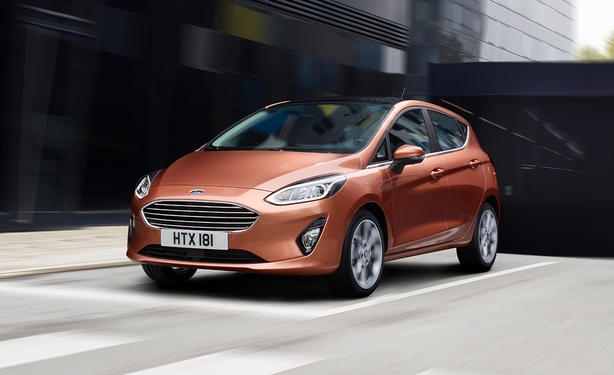The new Fiesta has had a lot of revisions but one wonders if they all add up to constituting a new car ? The styling is perhaps the most conservative aspect of the changeover, with no major or dramatic innovation, yet the wheelbase is longer by 4mm - a fairly critical change for a car that is facing the competition of a new Volkswagen Polo later this year.
Ford seems to have an almost endless list of technological innovations but it is not yet clear just how many will feature on the entry-level car, which is priced at €17,150. This is a three-door 1.1 litre petrol - the vast majority of Fiestas sold in Ireland will be petrol - with a choice of 70 horse power or 85 horse power outputs. This engine though is one that has been tweaked from the outgoing petrol engine.

The Fiesta arrives in Ireland at the end of this month.
We won't have details of what the Fiesta range will cost and what equipment will be standard on the entry level car until the car gets here at the end of the month. I notice, however, that the driver assistance pack, which features advance pre-collision warning, emergency braking and adaptive cruise control costs an additional €700. It will be interesting to see just how many extras it will take and what they will cost to put the "most technologically advanced car" on the road in Ireland. However, the Fiesta does currently lead the way in terms of what is now available on a small car for the first time. Extras include park assist and perpendicular parking features, traffic sign recognition, auto high beam change, blind spot recognition, pre-collision and pedestrian detection.
The car is aimed at buyers in their forties and fifties but Ford is hoping to broaden the appeal of the Fiesta this time around. It's now 40 years since the first Ford Fiesta was launched.
No doubt, Vollkswagen's Polo team have been all over this car to see how they can try to hold on to their car's position as the benchmark to be matched in the small car class.


